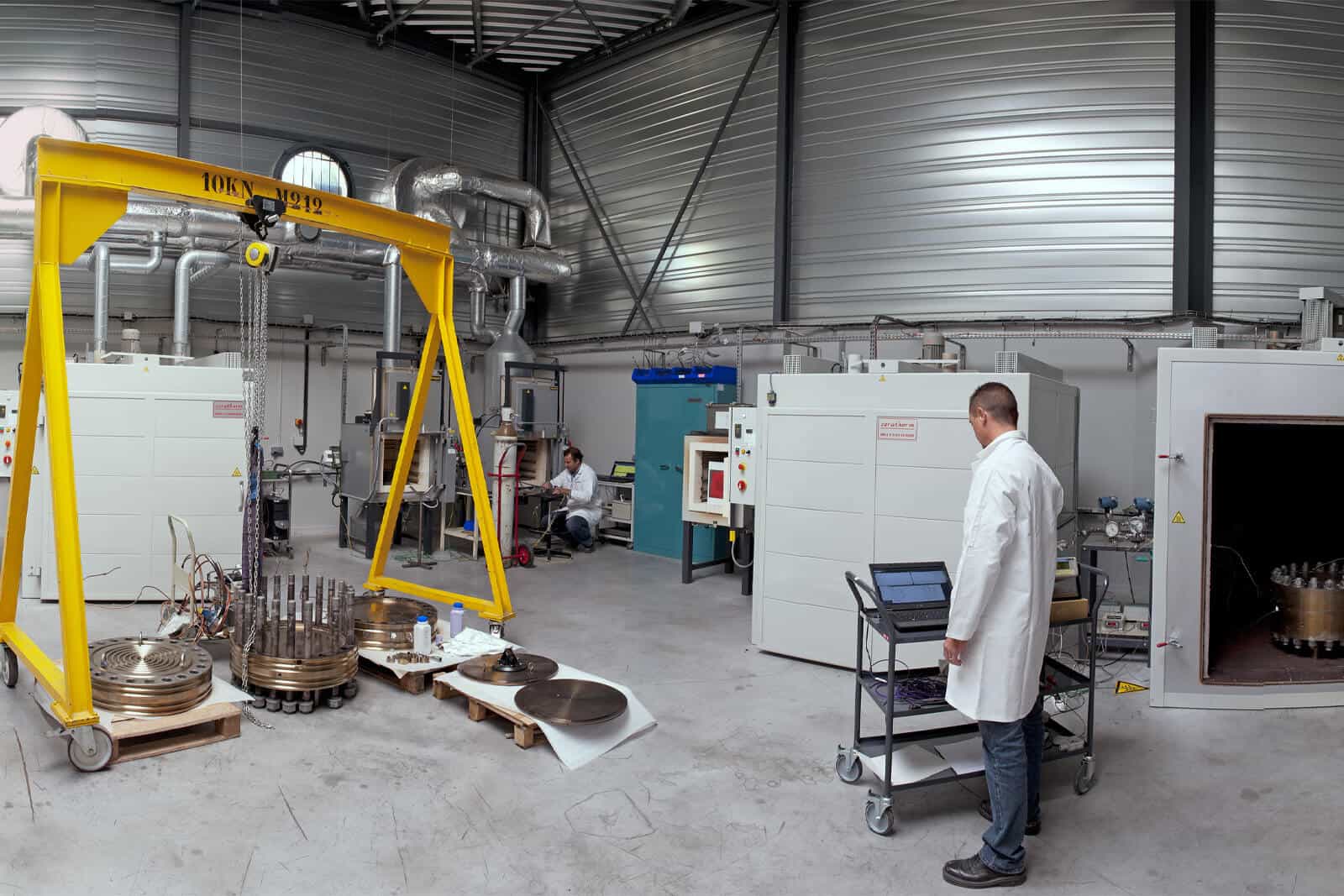聚变的中子锤:对设计的影响
随着聚变能源越来越接近商业化现实,一个核心的工程挑战正在出现:极端的中子通量轰击反应堆的内核,威胁着关键部件的寿命,尤其是密封件、结构材料和真空容器。对于像 ARC 这样的一些第一代反应堆来说,这可能意味着要以一定的频率更换关键部件。但 ARC 内部的设计更新提出了替代解决方案,如 FLiBe 液体毯,以缓解这一问题。
SPARC:核聚变的中子锤
由英联邦聚变系统公司开发的 SPARC 是世界上最先进的高磁场托卡马克原型之一。预计到 2026 年,它将实现等离子体盈亏平衡(Q > 1)。值得注意的是,它体积小巧,磁场强度高(高达 12 T);中子通量远远超过用于发电的工业核装置的通常速率。
维护和密封:隐藏的瓶颈
这种通量会导致结构材料活化、脆化、氦膨胀,并对密封功能的完整性造成挑战。
在这种条件下维护或更换密封件需要完全停机并进行远程干预,成本高且耗时。在没有热室或机器人维护基础设施的情况下,这就成为一个关键的限制因素。不过,由于 SPARC 的运行条件,激活的限制要比 ARC 大得多。
ARC:克服中子通量 影响 FLiBe
SPARC 的后续产品 ARC 就是针对这一挑战而设计的。它采用了一种由 FLiBe(氟化锂和氟化铍的混合物)制成的液态浸入毯。
什么 FLiBe 是否
- 中子缓和与吸收:保护结构材料和真空容器。
- 氚的孕育在中子轰击下,FLiBe 中的锂会产生氚。这意味着它可以产生核聚变反应所需的氚。
- 传热介质:可在 700 至 900°C 温度范围内高效运行,无需高压。
新的材料挑战出现
FLiBe 在解决材料中的中子问题时,有其自身的工程限制:
- 高工作温度(约 850°C)要求材料具有出色的耐热性和耐化学性。
- 兼容的材料包括
- 镍基合金,如哈氏合金-N 或铬镍铁合金,在熔盐中具有更好的耐腐蚀性。
- SiC/SiC 复合材料:耐中子且与 FLiBe 兼容(尽管成本高且易碎)。
- 石墨或涂层难熔金属(如钼、钨)。
- 密封材料必须能够抵抗热循环、化学腐蚀和潜在的氚渗透--这推动工程师们进行新的设计。
成熟度 FLiBe 和更广泛的采用
尽管 FLiBe 毯的性能很好,但在工业上还不成熟。正在开发的主要领域包括
- 氧化还原控制系统,避免盐分解和腐蚀。
- 从熔盐中提取氚的系统。
- 远程处理和盐净化技术。
然而,势头正在增长:
- ARC 是最先进的用户。
- Xcimer Energy(激光聚变)正在研究将 FLiBe 用作中子屏蔽。
- 在裂变领域,MoltexFLEX 和 TMSR-LF1(中国)正在 MSR 中使用其他盐类。
这一趋势表明了行业的明显转变:液态毯正在成为未来耐用聚变反应堆的架构,它提供了更好的正常运行时间、屏蔽和集成潜力,但代价是更高的化学和热复杂性。
核聚变行业正面临一个决定性时刻:反应堆堆芯能否承受自身的功率?SPARC 暴露了第一代托卡马克的工程痛点,尤其是在维护、密封和材料疲劳方面,而 ARC 等下一代设计则采用了 FLiBe 来克服这些问题。但是,随着 FLiBe 成为核聚变未来的核心,该行业现在必须解决腐蚀、氚管理和高温材料集成等问题。


